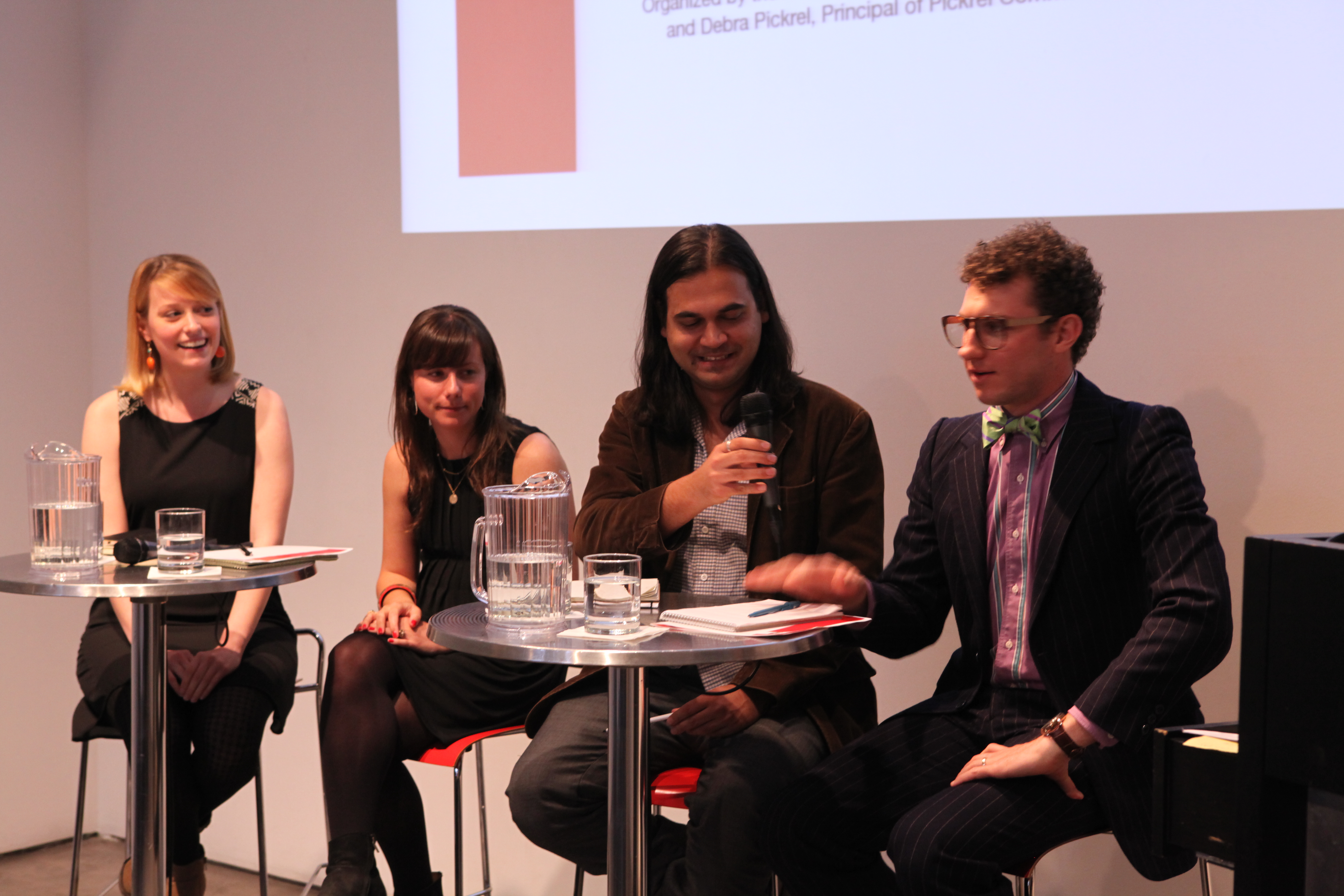by: Linda G. Miller
“The pressure for scoops is bigger than ever because of the linking system that has developed,” said Matt Chaban, referring to the preponderance of online publications and shared information. Chaban now writes the “Appraisals” column published every Tuesday in The New York Times, but his byline has previously appeared in the New York Observer, Crains New York Business, the New York Daily News, and The Architect’s Newspaper. He has been covering real estate for all of those publications, employing his versatile writing style to suit the voice of each publication. He had to excuse himself several times during the “Design Media Update: Insights from the Insiders” program to do some last minute fact-checking with his editor. Fact-checking, a safeguard against publishing mostly accidental errors, is somewhat of a luxury in this lightning-fast age of media, which, according to Chaban, has prompted the “update” to become the new “correction.”
Though entirely online, the New York edition of Curbed (http://ny.curbed.com/) has grown from being just a news blog to a website that’s updated throughout the day. A news e-blast with top stories is sent to subscribers, described by Senior Editor Jessica Daily as “urban enthusiasts.” The small but aggressive team is out and about the city finding content for a constant feed, but Curbed also repurposes stories covered by other publications by condensing and rehashing the content. They also delve into issues that are of importance to readers, who often point out even the smallest errors to the editors. In Curbed style, errors are noted with strike-throughs and corrections, and sometimes linked to further information and previous articles from its extensive archives.
GreenSource is primarily web-based, but now has a 12-page insert in print sister publication SNAP. GreenSource focuses on “the how and why a building works,” says Associate Editor Nicole Anderson.
Cassim Shepard of Urban Omnibus (http://urbanomnibus.net/), a publication of the Architectural League of New York, explained that his publication has the time to tackle long-form articles and a readership to digest them. “Local non-profits generate their own news,” he said. “Who else will cover it?”
To tweet or not to tweet, is a big question. Moderator Susan Szenasy, Hon AIANY, editor-in-chief and publisher of Metropolis magazine and a sage in all forms of media, stated: “I do like a really good tweet,” and added that a tweet is similar to writing a headline or a deck to a story. Anderson tries to tweet every day; Dailey’s Curbed tweets constantly; Shepard tweets and finds Twitter a feed for tips; and Chaban agrees that, though there is a lot of clutter, it can be good place to find tips and suggests “the snappier, the better.”
As evidenced by the comments from the panel, Szenasy closed by saying: “Every media is working – every media is needed.”
Editors Note: All of the publications welcome your tips (as do the editors of eOculus).
Linda G. Miller is a contributing editor to eOculus.
Event: Design Media Update: Insights from the Insiders
Location: Center for Architecture, 04.28.14
Speakers: Susan S. Szenasy, Hon AIANY, Editor-in-Chief and Publisher, Metropolis magazine (moderator); Cassim Shepard, Editor, Urban Omnibus; Nicole Anderson, Associate Editor, GreenSource; Matt Chaban, Metro Reporter, The New York Times; and Jessica Dailey, Senior Editor, Curbed NY
Organized by: AIANY Marketing & Communications Committee









